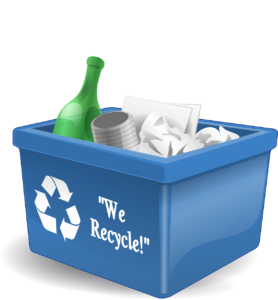Introduction
Promoting recycling to young learners fosters a positive outlook for the future. Therefore, parents and teachers should instill environmentally friendly behaviors among children to ensure that future generations are conservationists. We need to implement these strategies to encourage children to embrace the recycling culture.
1.Recycling Should Not Be a Boring Process
Children are highly active and eagerly participate in various activities throughout the day. You can make recycling enjoyable by incorporating games and other challenges into it. For example, you could create a recycling sorting game where children are tasked with sorting objects into specific bins, such as Paper, Plastic, and Glass. Reward their work and let them know they did it.
Another excellent example is arts and crafts, where children can engage in recycling activities while having a wonderful time. Encourage children to create artwork using recyclable materials like cardboard, bottle caps, and jars. In addition to understanding the issue of material reuse, children also develop their creative skills.
2.Be a Role Model
Children mimic what they see in the grownups. Learn to recycle in your day-to-day life, which is the best way to ensure you set the best example for change. Teach them the process of rinsing and sorting recyclable materials, explain the importance of this procedure, and then allow them to sort the materials themselves. Making recycling a habit involves observing people, particularly one’s elders in society, adhere to the practice, significantly contributing to it becoming the new norm rather than the exception.
3.Please inform us about the consequences of waste.
Explain to kids why recycling is essential or what could happen if they don’t. Make it easier by using clips, videos, pictures, or even age-appropriate books or stories to explain how waste affects wildlife, oceans, and climate change. We must frame these discussions to instill in those involved a positive attitude towards taking those actions.
You can arrange for them to visit recycling plants or participate in community cleaning activities. Overwhelming testimonies prove that people who have witnessed the recycling process or are involved in environmental concerns are affected by what they see.
4.Create a Recycling Routine
Let recycling become a daily habit. Establish at-home recycling containers and ensure that they know what goes to which container. Please encourage them to organize their belongings and place each item in the appropriate container category.
If we want children to embrace the culture, we should teach them that recycling is a weekly barter, especially when it’s part of a family project like “Recycling Day.” Take this time to categorize recyclables and talk with them about new ideas of how to minimize trash creation.

5.It is recommended that upcycling is redeemed and waste is minimized.
While teaching children, some of these activities guide them toward exploring options beyond recycling, such as upcycling and considering the amount of waste they produce. Please explain how to use second hand material to make new items, like tote bags or rags for wiping, and show how to mend toys instead of discarding them. Explain how individuals can reduce their environmental impact by preventing unnecessary purchases.
6.Relate Objectives of Connect Recycling to the Bigger Picture of Environmental Conservation
Explain to children what using recycled items means from a broad perspective by relating it to conservation and sustainability. Possible topics include preserving trees through paper recycling or reducing energy consumption through aluminum recycling. Linking recycling to concrete environmental gain can engage children and make them participate fully.
7.Participate in schools and communities.
Engage schools and community host groups in taking recycling programs to schools and other social settings. Schools can also implement recycling bins labeled “recycle” or “no recycle” and offer prizes to the students who recycle the most. Additionally, they can arrange for a speaker to visit the school and discuss environmental issues. Such activities, like park clean-up or selling recycling bins, give children practical ways to demonstrate what they have learned.
8.Celebrate Their Efforts
We should motivate all children to recycle by acknowledging their contributions. One suggestion is to create a unique “Recycling Champion” chart and record every positive action the students take. Alternatively, please encourage them to photograph and display the room on a bulletin board to showcase their accomplishments. You can motivate them to embrace green ethicist measures by using positive reinforcement approaches.
Conclusion
To teach children to grow up recycling is to give them the ability to preserve our earth for future generations and make it healthier. Making recycling enjoyable, teaching them its significance, and engaging our young people in a community project helps foster positive change. Gradually, these habits will imprint the child, ensuring an intellectually sustainable disposition upon graduation to adulthood.
Also read about: Why is Health and Wellbeing Important?


One Comment on “Recycling:Teach children to grow up”